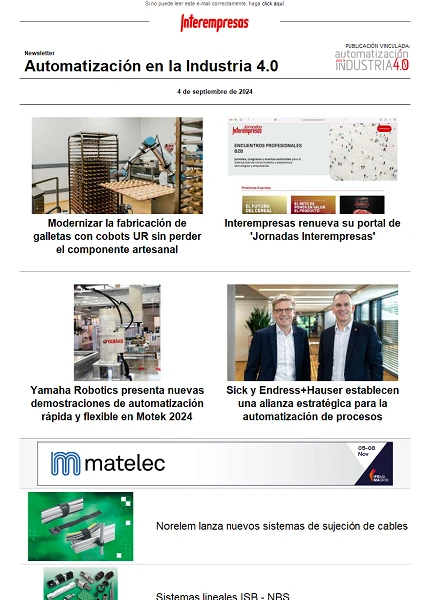Geometric inspection: improved method for the quality
The information resulting from this process serves for the type-approval or the improvement of the manufacturing technology. The following scheme describes and located the inspection process in the production process.
Diagram of the process of the geometric inspection
For geometric inspection, metrology laboratories are available in a variety of media. More media operators form a complex, versatile, but not perfect system. To improve it is necessary to apply corrections, in order to maintain uncertainty below an acceptable threshold. Correct supposed to know, identify, evaluate and eliminate errors.
Measurement errors
A process of measurement is the value for a scale whose true value is x.
We call it the difference measurement error : e = a - x
Leaving aside from accidental errors due to the lack of attention or the improper use of the instruments used, measurement errors are inevitable. The causes are searchable in the uncertainty of the instruments (instrumental errors) and also in the performance of the operator in the adjustment process to zero or reading of the values (subjective errors). Instrumental errors sometimes appear as regular errors, which can be constant or systematic.
To illustrate, the hour showing poorly synchronized with world time clock for precision is affected by a constant error. If the time you read in another clock that is ahead three minutes every day, it is a systematic error.
The magnitude of this error depends on the time of the last set to zero (fulfills the Systematics of a law). These constant or systematic errors are sometimes unavoidable. Fortunately the regularity of these errors allows detection and elimination of the result.
Errors of observation
Things are different in the case of irregular or random errors. They are also inevitable, but its removal is not always possible. Mainly due to the subjectivity of the operator, but they can also occur due to external causes random and uncontrollable.
To find an approximate value of one magnitude x is sometimes a single measurement. Conclusion on the random measurement error not be drawn from this evaluation. Making n measurements sobre the mesurando x available approaches:1,2,...n. The results values do not match especially when the resolution of the instrument is sufficiently small, but these values include the random error that depends on the operator. With the approachesI n equations can be written:
|
The methods of compensation offer procedures to obtain an approximate value acceptable to with a known probability. Errors andi, although individually they are uncontrollable, fully comply with laws (e.g. law of errors in Gauss), and in this lies the solution to the problem.
Focus on a systematic error
The diversity of potential errors, this time proposed to analyse only a kind of geometric, systematic, error which may occur in the process of inspection points with coordinate-measuring machines (MMC).
(More usual industrial Ruby), spherical tip mounted passive probes is used to identify points on the features to inspect, most of the MMC. Machine data processing system is able to correct the probe radius compensation, except for individual points that explore along a direction that is not perpendicular to the surface in the contact zone. This is the case that intends to analyze.
Demands for inspection of points on surfaces can be found at the levels expressed in coordinates tables. In general imposes two coordinates and calls for the value of the third, as you can see in the figure below:
 |
|
Inspection requirements expressed in coordinates table |
To simplify the analysis confined to a 2D situation as in the following figure. The graphic representation is the enlarged detail of the situation at the time of the probe. The feature on which you want to inspect the desired item (d), located at a distance d along the axis reference REFSYS x has marked with K.
 |
| Detail of situation at the time of probe |
The area of Ruby from the probe of exploration with the E Center and radius r is approaching the point D. Intends to analyse the available alternatives:
Alternative to)
Movement: manual; slogan: x = d; address: YPLUS
CX = 0 (default value); CY = 1 (default value)
Can be observed that in this way point D is unreachable, due to the orientation of the feature (tilted to the angle to). Item (I) in which the probe touches the feature stands in the way. The system considers that it plays with the point more ahead of the field, in the direction of exploration, marking with C. Thus, in the evaluation of coordinate and point (d) the error (f), of the distance that still needs to travel between points C and D.
f = h - rTriangle E I D angle I = 90 °
Therefore: h![]()
(h)![]()
replacing:
![]()
Yes want to eliminate the error: f = 0 is an impractical solution: r = 0
or of the other factor:
![]()
![]()
![]()
![]()
Another solution:
![]()
In the case depicted, for a probe of Ø2 mm and angle of 25 degrees (f) systematic error is 103 µm.
Result: point taken = false; x = expected value; y = false.
(Alternative b)
Movement: manual; slogan: x = d + t; address: YPLUS
CX = 0 (default value) CY = 1 (default value)
In this way reaches the desired point (d), but in the evaluation of the coordinate and the s of the distance that is left over in the displacement along the axis error and.
s = r - r cos (a)
s = r *(1-cos_(a))
Solutions: r = 0 or
1-cos (a) = 0
COS (a) = 1
to = 0 °
It is repeated, similar to the previous case, that to reduce the error can be reduced by the radio and to remove it is necessary to explore along the local perpendicular to the surface.
Result: point taken = correct; x = unexpected value; y = false.
(Alternative c)
Movement: manual; slogan: x = d + t; address: YPLUS
CX = r cos (90 + to);
CY = r sen (90 + at)
Taking into calculation the cosines directories of orientation, the system evaluates correctly coordinates played point, but with the discomfort of explore in a position to calculate: x = d + s = d + r![]()
Result: point taken = correct; x = right; y = correct.
Exploring manual running along the X axis is equivalent to the above situations with greater, results orientation errors even worse.
(Alternative d)
Movement: automatic
Program execution in numerical control process, starting from a security point in perpendicular direction to the characteristic of interest.
Result: point taken = correct; x = right; y = correct.
Alternative e)
If you have active probe, capable of continuous exploration in autorun eliminates this type of error. Account curve can process in the system of measurement, or import into a CAD system. An example is seen in the figure below:
 |
 |
|
Contour explored with probe actively in continuous contact |
|
(Alternative f)
In the 3D environment problems is even more complex by which, for a correct evaluation of coordinates of points distributed on complex surfaces is necessary to resort to the help of an appropriate software.
Having the computer model for a piece, through measuring software programmed PC-DMIS in the laboratory of metrology of the Fundación Ascamm Centre Tecnològic can produce programmes of inspection of complex surfaces, before having the sample of the piece. It works according to the principles of concurrent engineering in virtual environment simulator of the assigned machine and the piece in development. Thus, programmes of inspection simulated, ready for the delivery of samples achieves a significant reduction in the time of inspection. The use of this technology is helpful to give solution to the shortage of time for the phase of inspection, located near the end in the processes of development of pieces.
 |
|
Simulated comparison inspection with the computer model |
Practical advice
- Although error cannot be completely deleted is recommended to work with the cleanliness needed to eliminate the constant and systematic errors.
- If the result of a measurement falls outside the field of tolerance for this magnitude, it is recommended to repeat the measurement (if possible with various instruments and/or by different operators) as many times until results converge making the same value
- It is inappropriate to measure arcs of circle with one development less than 90 degrees around the Center, by means of discreet exploration. In these cases go more reliable results in Active Probe inspections and large continued.
- It is necessary to recommend the cosines directories in the perpendicular direction to the surface in the exploration area, to get the results without geometric error when locate points with passive probe, ongoing manual on 3D features that are not oriented (perpendicular to one of the axes) privileged position with regard to the reference system.
- We recommend using spherical probes with the available minimum radius.
- For inspection in series of samples running autómatica, programmed in numerical control, to eliminate the subjectivity of the operator is preferable.
- Recourse to the assistance of the appropriate software to inspect points distributed on complex features.
More media operators form a complex, versatile, but not perfect system. To improve it is necessary to apply corrections










